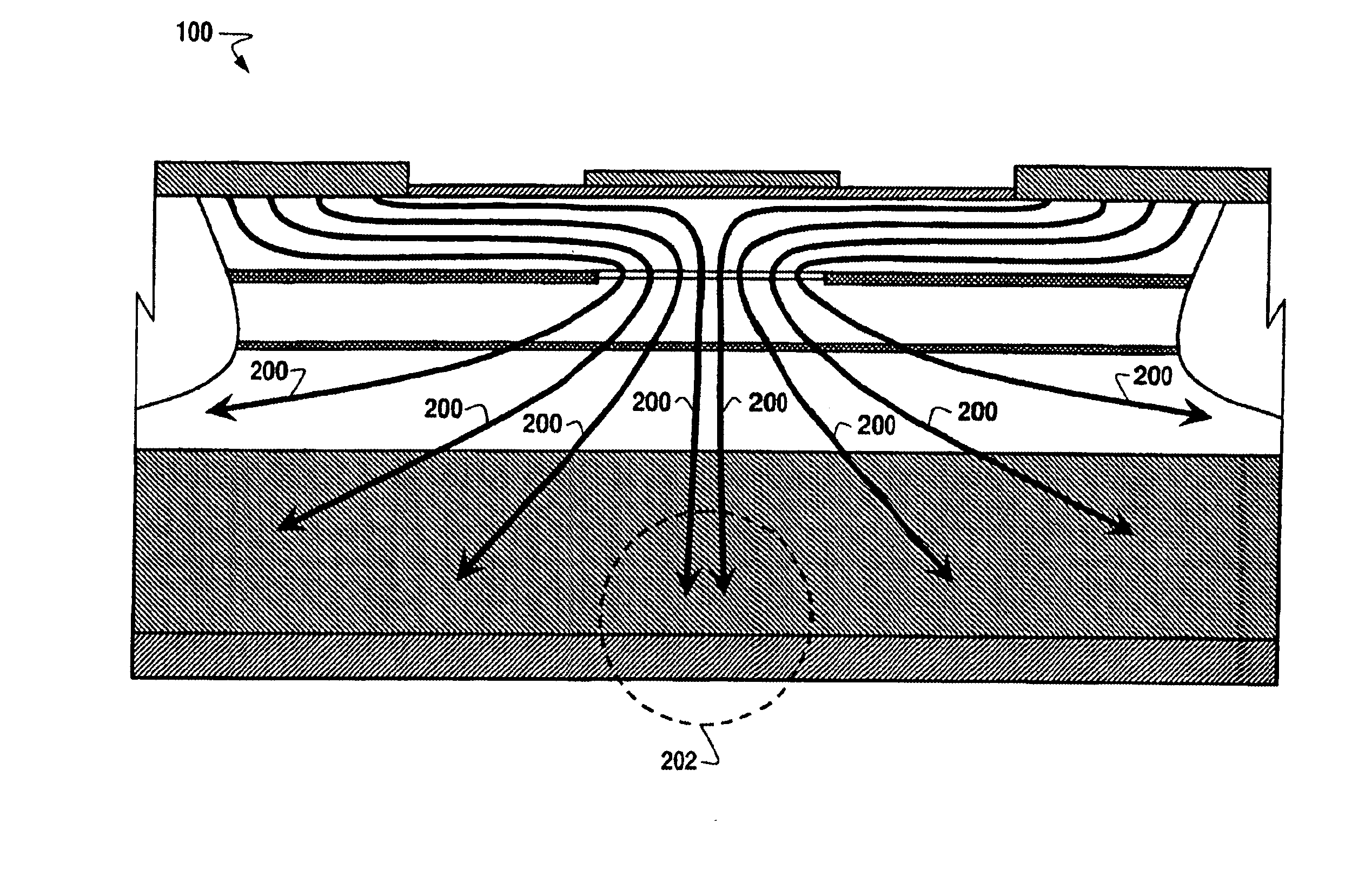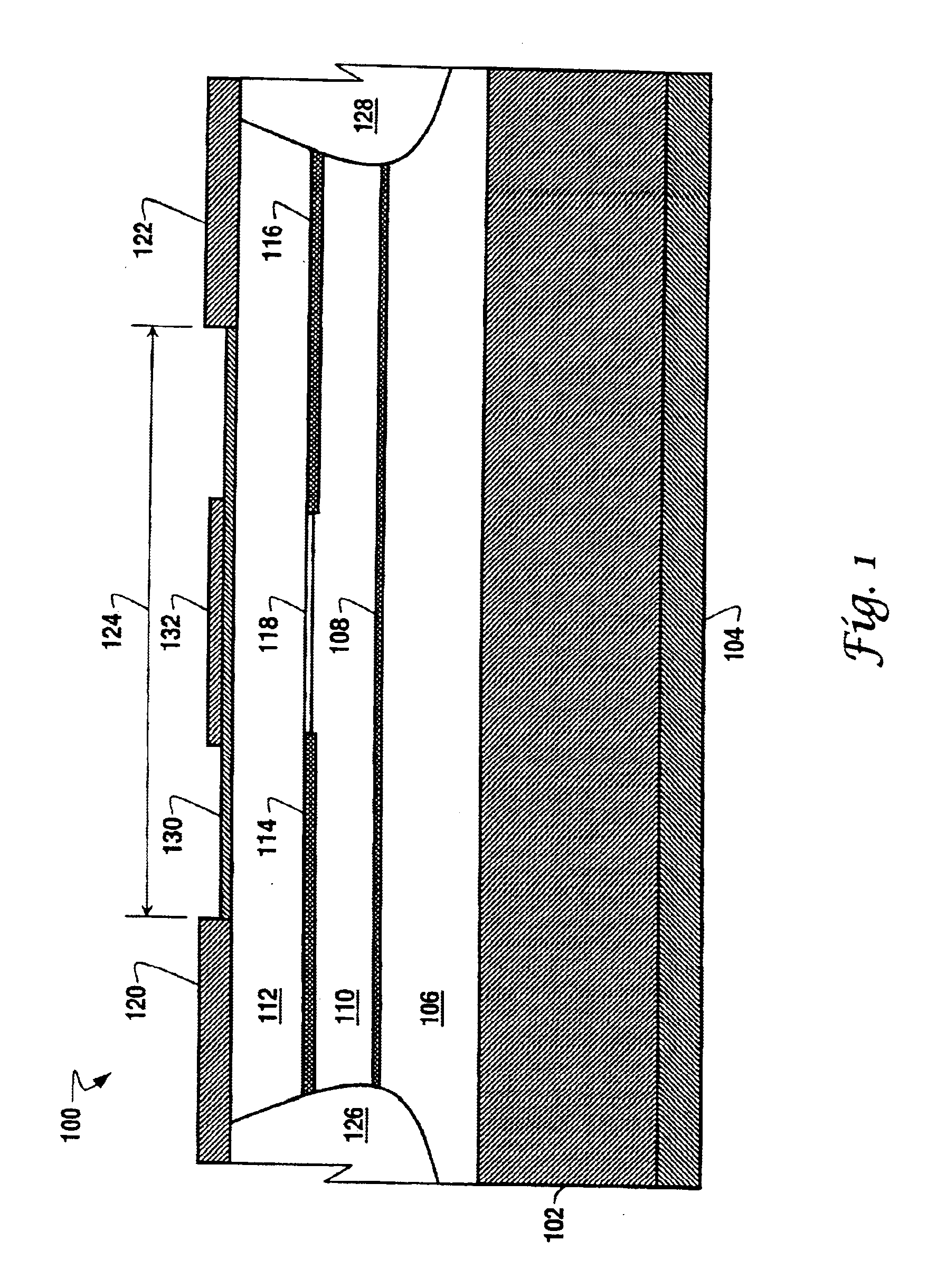Versatile method and system for single mode VCSELs
a single-mode vcsel and output mode technology, applied in the field of semiconductor lasers, can solve the problems of multiple-mode source inefficiency or unusability, difficult to manufacture vcsels that efficiently operate in the lower range, and negative effects on the output mode of a semiconductor laser, so as to maximize the loss, commercially viable vcsel power output and performance, and cost-effective and efficient
- Summary
- Abstract
- Description
- Claims
- Application Information
AI Technical Summary
Benefits of technology
Problems solved by technology
Method used
Image
Examples
Embodiment Construction
[0021]While the making and using of various embodiments of the present invention are discussed in detail below, it should be appreciated that the present invention provides many applicable inventive concepts which can be embodied in a wide variety of specific contexts. The specific embodiments discussed herein are merely illustrative of specific ways to make and use the invention and do not delimit the scope of the invention.
[0022]It should be understood that the principles and applications disclosed herein can be applied in a wide range of optoelectronic applications. For purposes of explanation and illustration, the present invention is hereafter described in reference to VCSEL laser sources. However, the same system might be applied in other applications where a single mode source is utilized.
[0023]As previously discussed, one of the limitations of conventional single mode VCSEL approaches is their tendency to become multi-moded as current is increased, resulting in a very small ...
PUM
 Login to View More
Login to View More Abstract
Description
Claims
Application Information
 Login to View More
Login to View More - R&D
- Intellectual Property
- Life Sciences
- Materials
- Tech Scout
- Unparalleled Data Quality
- Higher Quality Content
- 60% Fewer Hallucinations
Browse by: Latest US Patents, China's latest patents, Technical Efficacy Thesaurus, Application Domain, Technology Topic, Popular Technical Reports.
© 2025 PatSnap. All rights reserved.Legal|Privacy policy|Modern Slavery Act Transparency Statement|Sitemap|About US| Contact US: help@patsnap.com



